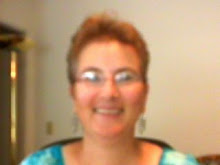If you were looking for innovative ideas for in your company, who would you ask? Say, ideas for improving the supply chain. Where, from whom, would you expect people to get those innovative ideas?
Turns out someone has done some research on that, as reported in a fascinating new book "Here Comes Everybody - the Power of Organizing Without Organizations", by Clay Shirky. Shirky describes the research of Robert Burt, University of Chicago, who has written a paper called "the Social Origins of Good Ideas". (pg. 230-231) The people with the best ideas (as judged by the managers) were those who had connections to employees outside their immediate department - their social network extended beyond their own departments. The ideas of employees whose network focused within their department lacked the diversity of thinking and clash of ideas that sparks innovation.
Shirky explains that social networks can have 2 kinds of capital: bonding and/or bridging capital. Bonding capital refers to the connections within a homogeneous group, whereas bridging capital refers to connections between various heterogeneous groups. The employees who had access to innovative ideas had bridging capital to other departments. When ideas were floated within a department in this electronics company, they were often rejected.
What's the takeaway from this? Well, if knowledge is socially constructed, then the potential power of collective knowledge is enormous. For the purposes of innovation, we should look for cross-pollinization of ideas, considered across departments, or across stakeholders. For the purposes of knowledge building, we should look for sharing ideas across our networks.
There was a recent discussion about this in a LinkedIn group. Many of us belong to Communities of Practice, and several of us belong to more than one. Some of us serve the function of “connector”, bridging across those communities or networks, connecting people, and bringing ideas from one community to another. As Naava Frank said, “It is important to help people become aware of which communities they are members and how their role as knowledge brokers can strengthen all of their communities.”
Thursday, April 8, 2010
Subscribe to:
Post Comments (Atom)




No comments:
Post a Comment